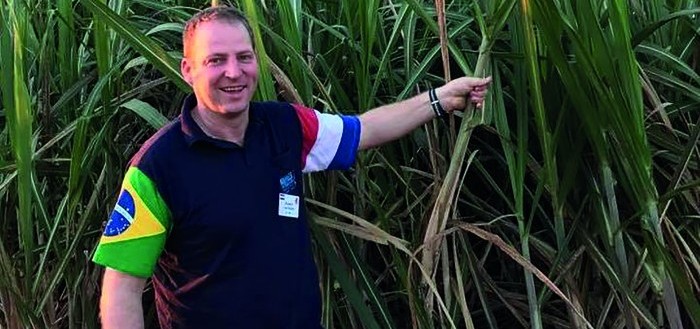In the latest issue of Pig World, Roland van Asten, who= runs the van Asten Group with his brother and sister, producing sows and fatteners at several locations in the region of Thuringia, in Germany and in the Netherlands, explains why the outlook is so difficult for pig producers in Germany.
Until the last few weeks, pig producers in Germany have seen no short-term and no long-term future.
As a consequence, we have lost about 20% of the German pig herd over two years and now have the lowest numbers since 1991. The Ministry calculated 1.4 million sows in its latest survey, but it could be even worse, as producers sometimes give the number of pigs they could hold, rather than the number they actually have.
There are lots of reasons for this situation. Germany used to be one of Europe’s biggest pork exporters, but African swine fever put an end to that in September 2020.
Covid has also had a very big impact, and, like everyone else, we have seen our costs sky-rocket – producers have been losing lots of money. However, the pig price has been increasing in recent weeks and the feed price is coming down, and I would say, cautiously, that producers are starting to see some profit return.
I am very happy and very confident to see the feed price coming down, but I am sceptical about the pig price going up – how much money do consumers have to spend on higher-priced pork? I am not sure it can hold for long.
Processor problems
The processors are also in a bad place in Germany, too. Germany is now slaughtering 700,000 pigs – not long ago, it was up to one million.
Meanwhile, Spain and other countries are targeting the German market. German Slaugtherhouses, certainly those that were export-orientated, are stuck between a rock and a hard place.
Processors had big issues with Covid and now the German state has now banned them from using hired workers through agencies. This has made it way more difficult to get enough staffing for slaughterhouses and further processing because they have to hire personnel themselves for every shift. It has added more costs, especially with the minimum wage now at €12/hour.
Regulatory uncertainty
The German Government is introducing lots new legislation governing sow housing and the environment. This has left many producers fearing they have no long-term future as well.
They had the chance to provide clarity, but they haven’t done it – they are killing the sector by keeping everything in the air, unclear.
The Government is not implementing the conclusions of the Borchet Committee, which advised that €4 billion per year is needed for the transition. Instead, the Government is offering €1bn spread over four years and only for farmers with less than 200 sows or farms with less than 1,000 fatteners.
There is also uncertainty over the environmental legislation. It is very different from what is happening in the Netherlands. You will have heard about the environmental rules they are introducing in the Netherlands and how they are forcing some farmers out of business – but that is mainly dairy farmers in areas of high nature value.
Most pig producers in the Netherlands already comply with what is required of them. For example, they have the facilities to remove emissions – we all have our air cleaners on the farm. The state in the Netherlands is more reliable. We have a clear view of what is going to happen for the next 10 years.
But in Germany we just don’t know. We are having to restructure one of our farms that has 6,000 sows and 20,000 fatteners. But we still don’t know what we need to do to comply with the ammonia reduction legislation, and we have no experience in how the accommodation needs to be built for the free-running sows in the breeding unit.
We are now looking at how we can adapt the current system, but we will lose a lot of space per sow. On one farm, we have reduced numbers slightly, from 5,300 to 5,000 sows, to move from three-week to four-week weaning as we did not have enough farrowing crates for four-week weaning.
Innovation
However, in general we have not cut down on our numbers – we only go at full power. We are sticking with it. We have just had a baby – I believe my boy wants to be a pig farmer and the public will keep wanting to eat pork!
We will continue to work on innovation to become more efficient. We have made huge improvements on feed efficiency, feed cost and pig health by expanding the use of fermentation in our pig feed.
But we are going to need more and more space and, at the same, the cost of building is rapidly increasing. So, the big question facing us all is – how do we get higher animal welfare and more space per pig for less cost?




